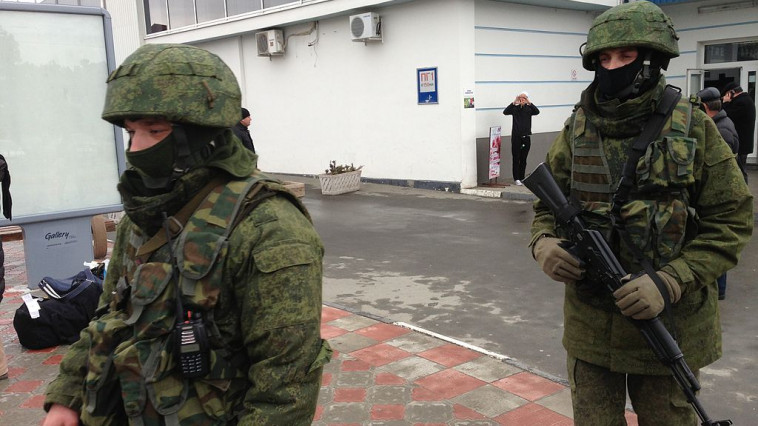Russian Expert: „Ukraine stopped a NATO-Russia conflict at the Romanian border"

At the NATO Information and Documentation Centre has been launched the "Hybrid Warfare a la russe” study, signed by the Expert in Foreign Politics and Security from the Russian Federation, Yuri Feodorov.
The study was published with the support of the Center for Army, Conversion and Disarmament Studies (Ukraine) and provides an analysis of the hybrid warfare led by Russia against Ukraine. The study also presents information on hybrid warfare strategy, character and structure of hybrid forces in Russia, hybrid war tactics, planning and preparing for classic war against Ukraine. The work is also an account of the support offered by Russia to the organizations of the extreme right and ultra-nationalistic Europe, about the role of the Foreign Intelligence Service of the Russian Federation in the hybrid warfare, the right and neo-fascist radical organizations financed by Russia, Russian propaganda in Europe, etc.
Eastern Military District - the most powerful in Russia
The author mentioned that the reason for starting a hybrid warfare against Ukraine, but also throughout all the post-Soviet space, is linked to Putin's ambitions and the people from his entourage to behave as major leaders on global and regional level. This trend is fueled by the political thinking of the Russian Federation, which does not accepts until today the idea of disintegration of the Soviet empire.
It is assumed that Russia has prepared a hybrid warfare, which was to occur in parallel with a classic war after the first Maidan in Ukraine, i.e. "Orange Revolution" of 2004 in which came out victorious the Yushchenko - Tymoshenko tandem. But the war in Chechnya and the war against Georgia in 2008 proved that Russia was not prepared for a major assault against Ukraine. Then, in 2008, they began to implement the reform of the Russian Army, which is scheduled to end in 2020. Under this reform were created the military districts, and the strongest - in terms of fighting ability - is South Military District, which, by the way, is part of the Russian Taskforce troops from Transnistria.
Putin did not expect that Ukraine will stand up against Novorossiya
The Novorossiya project was part of the hybrid warfare. Ukraine, however, managed to fight against this project. At the half of 2015 year, it became clear that Moscow failed to achieve the goals that it has proposed in early 2014: to transform Ukraine into a protectorate of Russia, to crumble regions of south-eastern Ukraine and to create such a quasi-state under the name of "Novorossiya", that would be led de facto by Russia, to achieve federalization of Ukraine, but also to destabilize the power in Kiev through economic pressures and military actions in Donbas. Putin simply underestimated the determination of the Ukrainian society and a large part of the Ukrainian elites to oppose Russian aggression, but also the ability of US and EU to impose sanctions on Russia. Putin did not take into account also the capacity of the Ukrainian authorities to repress diversionary and terrorist groups in the Odessa region, Kharkiv and other regions of southeastern Ukraine within 3-4 months after the fall of Yanukovych regime. Thus, the Ukrainian authorities did not allow to expand the hybrid war beyond the territory of Donbas.
"If Ukraine have failed to stop the Novorossiya project, i.e. thwarting the separatist scenarios in regions of Dnipropetrovsk, Kharkiv, Odesa, today, the Russian army would be on the border with Romania and would have caused a conflict with NATO," stated Yuri Fedorov.
The expert concluded that the next hybrid warfare that will lead Putin against his own people, because it will increase the dissatisfaction with lower living standards within Russian people, and this will be due to decreasing the exports and energy resources, including the natural gas. Namely because of that Putin created the National Guard which is directly subject to him.
How Russia legalizes its Armed Forces
Since 2015, Vladimir Putin signed a decree allowing all those who speak Russian to become mercenaries in the Russian Army. Thus, the inhabitants of Donetsk and Lugansk regions, learning about this, began to enlist legally in the Russian Army. "According to our information, the first and second military corp, which fights against Ukraine, consists exclusively of people that are living in these regions," stated Mykhailo Samus, the deputy director of the Center for Army, Conversion and Disarmament Studies in Ukraine. Thus, Russia has begun to work legally with the separatists to control the money they transfer to people. The Armed Forces from the occupied territories are some brigades, battalions that are part of regular Armed Forces of the Russian Federation. All these people are fighting in Donbas and wearing the inscription DNR People Militia need salaries, social payments, leave money etc. Russia preferred to work under contract with these people, because it is easier for Russia and that does not allow stealing of the money.
During the presentation of the study, it was inaugurated a photo exhibition entitled "Children of War", that is showing the fate of children in the Russian-Ukrainian conflict. Now in the anti-terrorist operations zone, on the territory controlled by constitutional authorities, there are about 60,000 schoolchildren.














